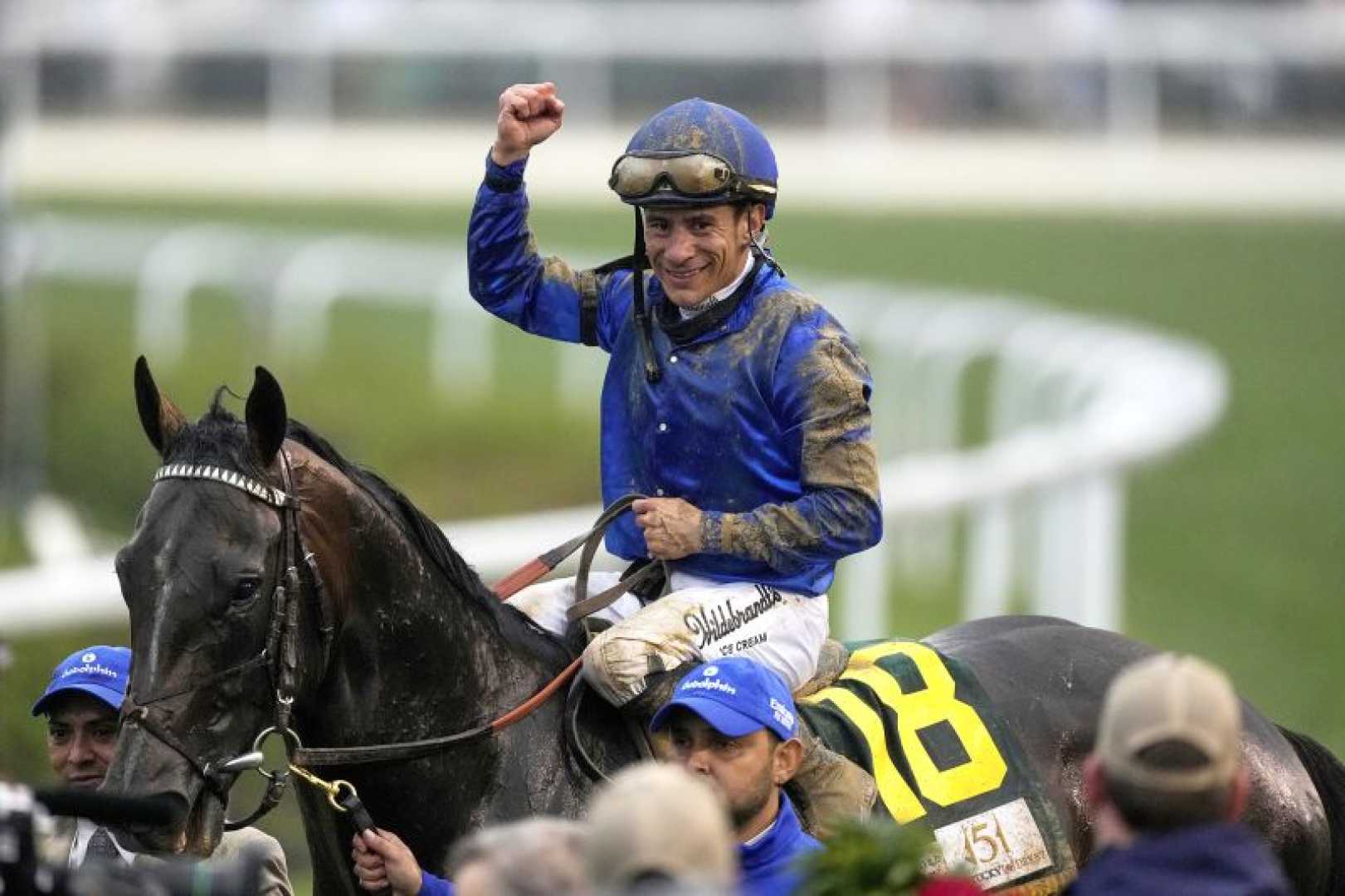Sports
Jockey Junior Alvarado Faces Controversy After Kentucky Derby Crop Violation

LOUISVILLE, Ky. — Junior Alvarado, the jockey who rode Sovereignty to victory in the Kentucky Derby on May 3, has sparked controversy following allegations of excessive use of his riding crop. Race stewards state Alvarado struck his horse eight times, violating the established limit of six strikes during the race.
The violation falls under the “crop rule,” implemented with the Horseracing Integrity and Safety Authority (HISA) regulations that took effect in July 2022. Reports indicate this rule has been breached more than 2,500 times since its inception.
“I am surprised to see that high of a number of violations,” said Ramon Dominguez, a retired jockey and Hall of Fame inductee. “Most jocks certainly want to conform and follow these rules.”
Amid growing concerns over declining interest in horse racing and animal welfare, industry leaders view this incident as an opportunity for public education, especially with the Belmont Stakes approaching on June 7.
Lisa Lazarus, HISA’s CEO, spoke with USA TODAY Sports about the issue. She noted that 90% of these violations stem from jockeys striking their horses seven times, just one over the permitted limit. “It’s essentially a jockey just miscounting,” Lazarus explained, emphasizing that while it is a rule violation, it is treated differently than multiple violations.
Critics argue that the crop’s necessity is questionable. Nations like Sweden and Denmark limit its use to safety purposes. In New Jersey, a rule introduced in 2021 allowed crops only for safety measures, but HISA regulations have now unified the rules across states.
Jockey Mike Smith defended the use of the crop, stating, “It’s not to hurt the horse. It’s just to get their attention.” He described the crop’s function as a helpful nudge, meant to focus the horse during a race.
Terry Meyocks, president of the Jockeys Guild, highlighted safety concerns as intertwined with the crop’s use. “When you’re going through a hole at the top of the stretch, you want to use the crop to avoid injury,” he said.
Conversely, Hall of Fame jockey Jerry Bailey voiced his skepticism about the crop’s role in safety, suggesting that reins are more effective for maintaining control. “The reins are the best thing to use for safety by far,” said Bailey.
According to HISA regulations, a rider must not raise the crop above their helmet and can only strike specific areas of the horse. Alvarado, 38, did not respond to media inquiries but expressed in a podcast that he forgot the crop rule while racing and was focused on his performance.
His agent indicated an intention to appeal the ruling. Alvarado expressed, “I didn’t abuse the horse…the punishment doesn’t fit the crime.” HISA’s Marc Guilfoil affirmed that while Alvarado did not mistreat Sovereignty, he did break the rules. “There wasn’t a blemish on the horse,” Guilfoil stated.
Despite advancements in crop technology that have reportedly reduced injuries, concerns remain about public perception of the sport. Former equine medical director Rick Arthur highlighted the importance of using crops only for safety reasons, citing a substantial drop in visible injuries linked to crop use over the past 15 years.
Eight crop models have been approved by HISA, indicating an industry move toward safer equipment. Ann McGovern, director of racetrack safety, mentioned that previous standards had allowed for harsher materials, necessitating regulatory changes to prevent injuries.
Violations linked to riding crops are emerging as a significant issue among jockeys, with Alvarado’s fine being particularly contentious within the Jockeys Guild. The $62,000 fine, which reflects 10% of his winnings for the race, has drawn criticism.
As the debate continues, HISA remains steadfast about enforcing the crop rules at all levels of racing, claiming to prioritize the sport’s integrity while addressing public concerns.
Alvarado is scheduled to serve a two-day suspension on May 29-30. The jockey faces scrutiny, holding nine crop-rule violations according to HISA’s records, which places him above most other top riders.












